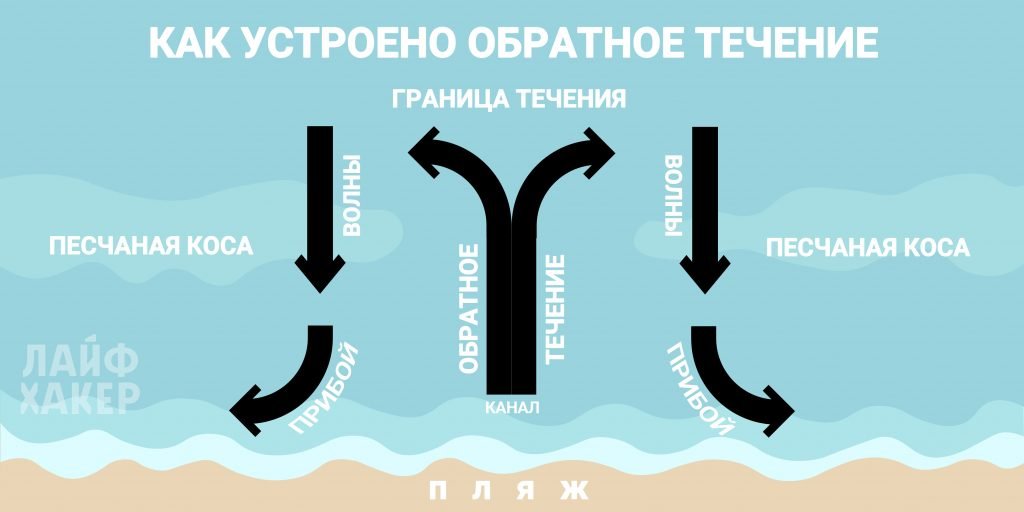The reverse, or rebound, is called Rip current / National Geographic strong current directed perpendicular from the coastline to the open ocean, sea or lake. It is considered one of the most dangerous natural phenomena. Its cunning lies in the fact that it occurs very close to the shore — where no one expects danger.
Usually the reverse flow is formed in areas where there are sandbanks, shoals, reefs, breakwaters, dams or piers. Due to the terrain features, the water cannot return to the reservoir evenly, so the main stream rushes at high speed into the strait between the obstacles and fades immediately after them.
The reverse current occurs on beaches with both hard (rocky) and soft (sandy or muddy) bottoms.

The width of the reverse flow sometimes reaches 45 m, but most often does not exceed 9 m. The water flow can move at a speed of 8 km/h.
Experts distinguish The 3 most common types of rips / Rip Current Safety different types of backflow. For example:
With the reverse flow, it is usually possible to Rip current science / U.S. National Weather Service notice:
Abroad, the reverse flow is denoted by the phrase rip currents. If you see it on flags and signs, do not go into the water. If there are no warnings, it is worth checking the information with rescuers.
In fact, it's not as scary as it might seem. The reverse flow is often confused Rip current / National Geographic with an underwater one that runs along the bottom of the sea or ocean and can drag a person under water. When the reverse current moves Rip Currents / National Weather Service only the top layer of water, which means that it will not pull down and will not be overwhelmed by a wave. If there are lifeguards on the beach, they will get to you in a few minutes.
If you feel that you are being carried away into the sea, do not panic and do not try Rip current / National Geographic swim to the shore against the current. This is a very difficult task even for strong experienced swimmers. Instead, try to swim parallel to the coastline. Usually the reverse current is not too wide, and you will most likely be able to get out of it quickly.
If you can't swim out of the current, then save your strength and move forward with the current. It will weaken quite quickly, and then you will be able to sail away, and then return to shore.

In order not to become a victim of the reverse flow, it is important to follow simple rules Rip Currents / National Weather Service security: